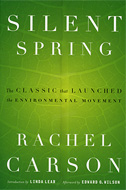TOTALLY GEEKED!
| Post Info | TOPIC: S/O of the Vaccines thread--Rachel Carson should be tried for genocide | ||||||||||||||||||||||||||||||||||||||||||||||||||||||||||||||||||||||||||||||||||||||||||||||||||||||||||||||||||||||
|---|---|---|---|---|---|---|---|---|---|---|---|---|---|---|---|---|---|---|---|---|---|---|---|---|---|---|---|---|---|---|---|---|---|---|---|---|---|---|---|---|---|---|---|---|---|---|---|---|---|---|---|---|---|---|---|---|---|---|---|---|---|---|---|---|---|---|---|---|---|---|---|---|---|---|---|---|---|---|---|---|---|---|---|---|---|---|---|---|---|---|---|---|---|---|---|---|---|---|---|---|---|---|---|---|---|---|---|---|---|---|---|---|---|---|---|---|---|---|---|
|
|
An examination of actual data, however, thoroughly debunks Carson’s claim. This can be seen in Table 1, which compares the Audubon Society’s Christmas Bird Count data for 1941 (before DDT) to that of 1960 (the height of DDT, shortly before the publication of Silent Spring).[39] National Audubon Society, 1942, The 42nd Christmas Bird Count, Audubon Magazine; National Audubon Society, 1961, The 61st Christmas Bird Count, Audubon Field Notes 15, no. 2. The Audubon Society keeps its data freely available online at http://birds.audubon.org/historical-results.
It can be seen that far from declining, the number of birds encountered by each observer nearly quadrupled over the period in question. In the case of the robin, singled out by Carson as “the tragic symbol of the fate of the birds,”[40] Carson, Silent Spring, 104. the population count increased twelvefold.
Many other studies show the same pattern of sharp increase of some bird populations during the DDT years. For example, a bird sanctuary that has been counting birds over Hawk Mountain, Pennsylvania since the 1930s reported an increase in sightings of ospreys from less than 200 in 1945 to over 600 by 1970, and an increase in sightings of migrating raptors from 9,291 in 1946 to 29,765 in 1968.[41] J. W. Taylor, “Summaries of Hawk Mountain Migrations of Raptors: 1934–1970,” Hawk Mountain Sanctuary Newsletters, quoted in Edwards, “DDT: A Case Study in Scientific Fraud,” 84. The herring gull population on Tern Island, Massachusetts grew from 2,000 pairs in 1940 to 35,000 pairs in 1970 (at which point the Audubon Society displayed its concern for the birds’ wellbeing by poisoning 30,000 of them, a procedure it said was “kind of like weeding a garden”). F. Graham, Audubon Magazine, January 1985, 17; Edwards, “DDT: A Case Study in Scientific Fraud,” 84.
And the annual data from the North American Breeding Bird Survey from 1966 (the year the survey was launched, in response to the public fear Carson had created about the effects of DDT on birds) through the end of the 1970s shows no obvious pattern of overall increasing bird populations as would be expected to follow the 1972 banning of DDT if it were truly harming bird populations. J. R. Sauer et al., The North American Breeding Bird Survey, Results and Analysis 1966–2009, version 3.23.2011, USGS Patuxent Wildlife Research Center, Laurel, Md.
Although many of Carson’s key claims about how DDT affects the health of birds have been disproven in the years since her book was published, there is now evidence, both from field studies and laboratory experiments, that DDT does have an effect on birds that Carson did not know about when she wrote Silent Spring: it can cause many bird species to produce eggshells that are thinner and therefore more fragile. This effect has been linked to reduced populations of certain bird species, especially “raptors, waterfowl, passerines, and nonpasserine ground birds.”[44] ATSDR, “Toxicological Profile for DDT, DDE, and DDD,” 134, D24–D26.
Eggshell thinning is a potential problem, but it should not be overstated. The levels of DDT required for malaria control are much less than those required for crop dusting as practiced in the 1950s. Furthermore, the problem does not affect every bird species — indeed, for some species, there is reason to believe that DDT has an overall beneficial effect, by protecting them from the insect-borne diseases that are a primary cause of bird mortality. For example, some marsh bird populations grew so dramatically during the DDT years that they emerged from their marshes in millions to cause significant damage to crops in the American Midwest.[45] J. Gordon Edwards, “The Lies of Rachel Carson,” 21st Century Science and Technology, Summer 1992 Ultimately, the effects of DDT on bird populations are not nearly as dire as Carson depicted — and offer no justification for the millions of human deaths caused by the unwarranted prohibition of DDT.
Claim #3: DDT Threatened the Life of the Oceans. The most egregious lie put forth by the anti-DDT crusaders was launched after Carson’s death, by Charles Wurster, a cofounder of the Environmental Defense Fund. In a note published in Science magazine in 1968, Wurster claimed to have shown that the presence of 500 parts per billion (ppb) of DDT in seawater would stop photosynthesis by phytoplankton.[46] Charles F. Wurster, Jr., “DDT Reduces Photosynthesis by Marine Phytoplankton,” Science 159, no. 3822 (1968): 1474–75. Since phytoplankton are the productive foundation that supports all higher marine organisms, their suppression by DDT seemed to threaten the very existence of all life in the ocean, and possibly on the planet.
This was truly an alarming result. However, the maximum solubility of DDT in seawater is only 1.2 ppb, nowhere near 500 ppb, so the scenario Wurster reported was physically impossible.[47] DDT can be dissolved in seawater at concentrations higher than 1.2 ppb if the water contains other components, and of course DDT that is not dissolved can still be carried in suspension. But even so, Wurster was unable to find any examples in nature of water with DDT levels at 500 ppb, even though he took samples from locations that had very recently been treated with DDT, and the highest concentrations he found were short-lived and very localized — hardly sufficient to pose a serious threat to the world’s oceans. Wurster, “DDT Reduces Photosynthesis by Marine Phytoplankton,” 1475. In fact, in order to get so much DDT to dissolve, Wurster had been forced to use not seawater, but a sal****er/alcohol mixture as the medium for his experiment. It is hardly surprising that marine algae stopped functioning when thrown into such stuff. In contrast, other scientists found no harm or loss of activity of the same species of marine algae that Wurster used when immersed in actual seawater saturated to the limit with DDT. Thomas H. Jukes, “Silent Spring and the Betrayal of Environmentalism,” 21st Century Science and Technology 7, no. 3 (Fall 1994).
The Wurster experiment was thus meaningless as science. But as a propaganda tool for those seeking to ban the life-saving chemical, it was quite useful. In 1969, Paul Ehrlich, otherwise famous as the author of the antihumanist bible The Population Bomb, set alarm bells ringing everywhere with a screed entitled “Eco-Catastrophe!” in Ramparts magazine.[49] Paul Ehrlich, “Eco-Catastrophe!” Ramparts, September 1969, 24–28. Reporting the history of the world as seen with undisputable authority from the standpoint of the future, Ehrlich wrote:
The end of the ocean came late in the summer of 1979, and it came even more rapidly than the biologists had expected. There had been signs for more than a decade, commencing with the discovery in 1968 that DDT slows down photosynthesis in marine plant life. It was announced in a short paper in the technical journal, Science, but to ecologists it smacked of doomsday. They knew that all life in the sea depends on photosynthesis, the chemical process by which green plants bind the sun’s energy and make it available to living things. And they knew that DDT and similar chlorinated hydrocarbons had polluted the entire surface of the earth, including the sea. For the record, 1979 has come and gone, and life in the world’s oceans has continued to flourish gloriously. But, as a result of the mendacity and actions of Carson, Ruckelshaus, Wurster, Ehrlich, and their allies, DDT has been banned, and hundreds of millions of people who might have lived to enjoy those oceans, to sail on them, fish in them, surf in them, or swim in them, to play on their beaches or write poems about their sunsets, are dead. I'm not arguing, I'm just explaining why I'm right.
Well, I could agree with you--but then we'd both be wrong. |
||||||||||||||||||||||||||||||||||||||||||||||||||||||||||||||||||||||||||||||||||||||||||||||||||||||||||||||||||||||
|
|
|
||||||||||||||||||||||||||||||||||||||||||||||||||||||||||||||||||||||||||||||||||||||||||||||||||||||||||||||||||||||
|
|
|
||||||||||||||||||||||||||||||||||||||||||||||||||||||||||||||||||||||||||||||||||||||||||||||||||||||||||||||||||||||
|
|
|
||||||||||||||||||||||||||||||||||||||||||||||||||||||||||||||||||||||||||||||||||||||||||||||||||||||||||||||||||||||
|
|
|
||||||||||||||||||||||||||||||||||||||||||||||||||||||||||||||||||||||||||||||||||||||||||||||||||||||||||||||||||||||
|
|
|
||||||||||||||||||||||||||||||||||||||||||||||||||||||||||||||||||||||||||||||||||||||||||||||||||||||||||||||||||||||
|
|
|
||||||||||||||||||||||||||||||||||||||||||||||||||||||||||||||||||||||||||||||||||||||||||||||||||||||||||||||||||||||
|
|
|
||||||||||||||||||||||||||||||||||||||||||||||||||||||||||||||||||||||||||||||||||||||||||||||||||||||||||||||||||||||
|
|
|
||||||||||||||||||||||||||||||||||||||||||||||||||||||||||||||||||||||||||||||||||||||||||||||||||||||||||||||||||||||
|
|
|
||||||||||||||||||||||||||||||||||||||||||||||||||||||||||||||||||||||||||||||||||||||||||||||||||||||||||||||||||||||
|
|
|
||||||||||||||||||||||||||||||||||||||||||||||||||||||||||||||||||||||||||||||||||||||||||||||||||||||||||||||||||||||
|
|||||||||||||||||||||||||||||||||||||||||||||||||||||||||||||||||||||||||||||||||||||||||||||||||||||||||||||||||||||||
|
|
||



